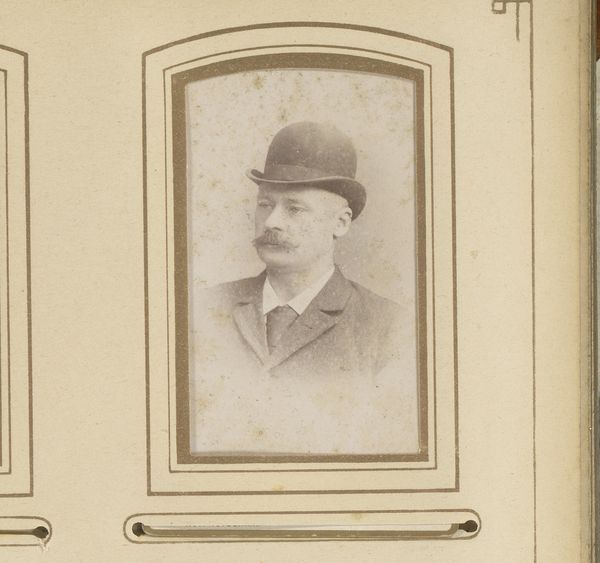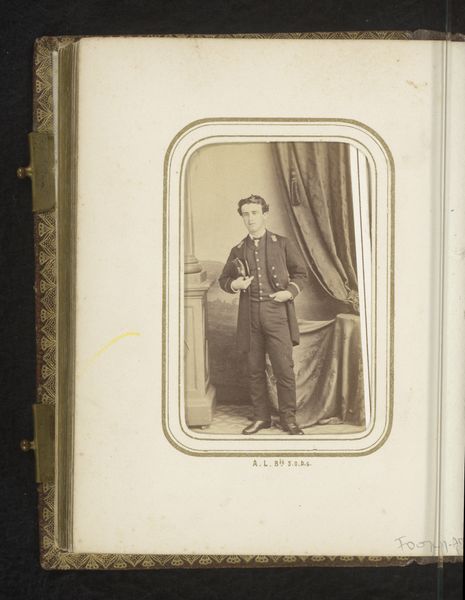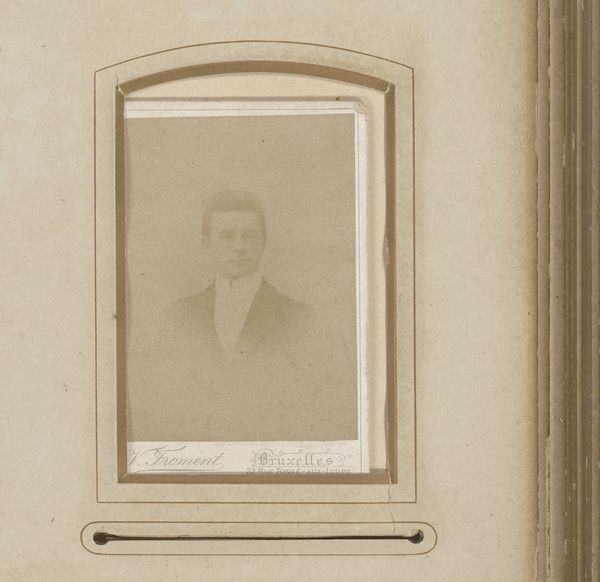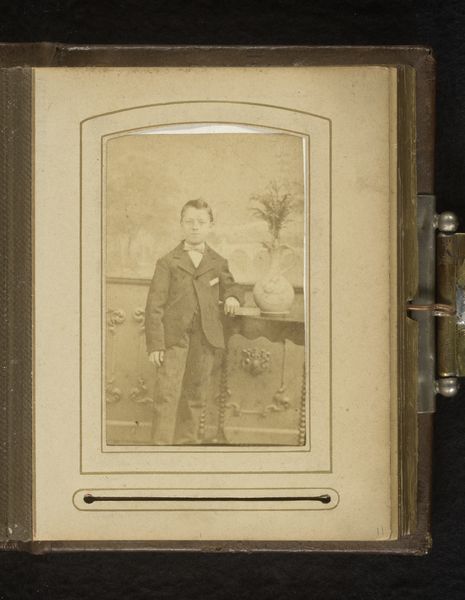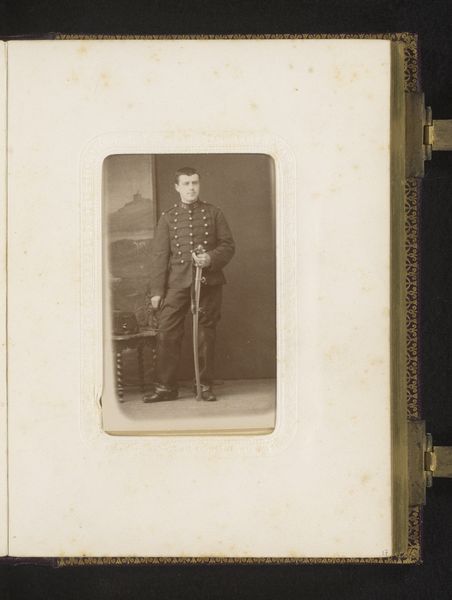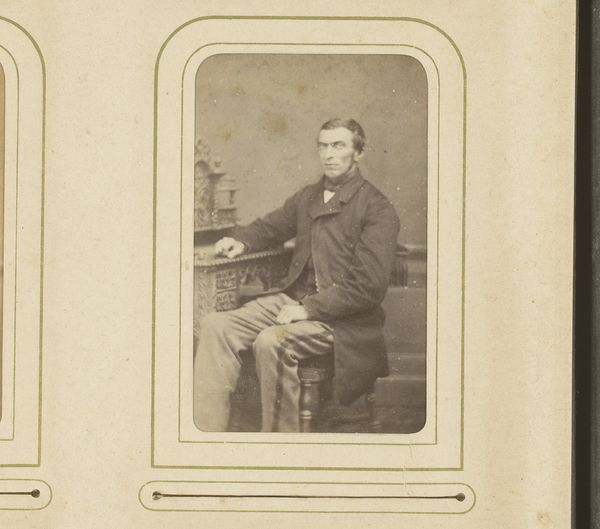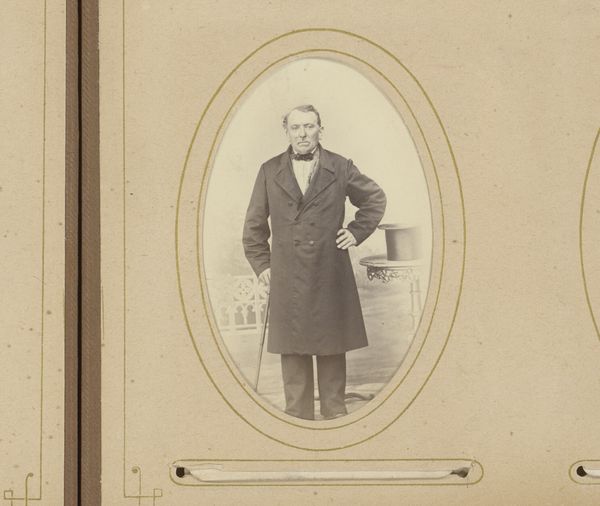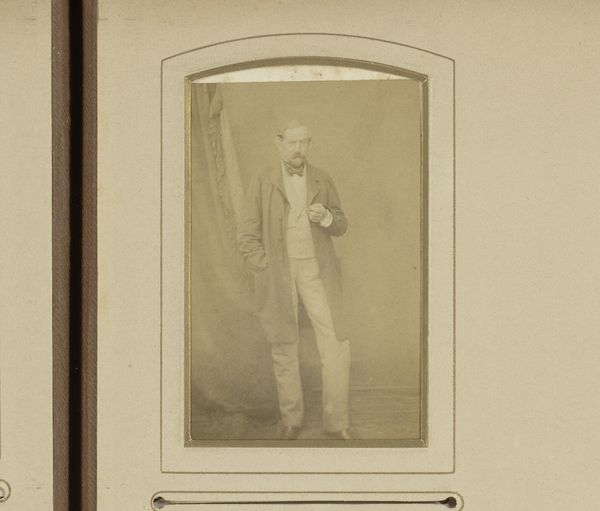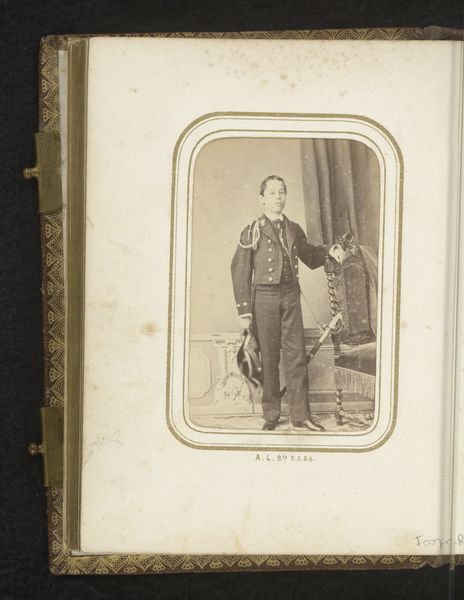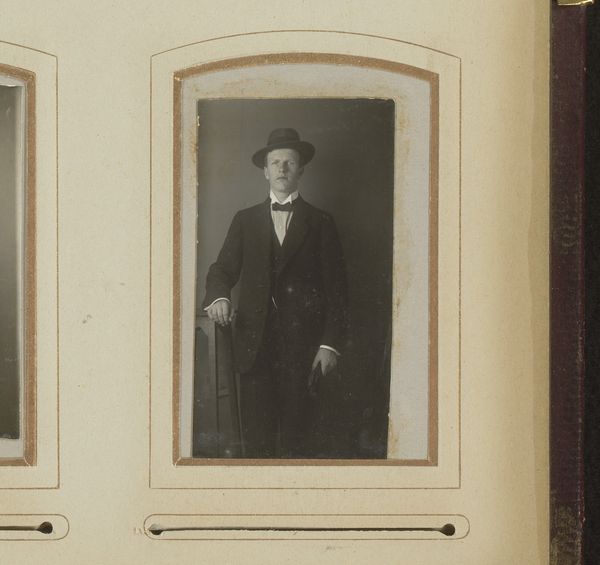
photography, albumen-print
#
portrait
#
pictorialism
#
photography
#
historical photography
#
genre-painting
#
albumen-print
#
realism
Dimensions: height 81 mm, width 52 mm
Copyright: Rijks Museum: Open Domain
Curator: Here we have Eduard Heinrich Joseph Weismuller's "Portret van een staande man met hoge hoed," dating from approximately 1875 to 1897. It’s an albumen print, showcasing a man in formal attire. What’s your first take? Editor: There’s a melancholic stillness. The sepia tones lend this overwhelming sense of history that suggests both permanence and erasure. It whispers of class, status, and perhaps unspoken stories of masculinity. Curator: Absolutely. Albumen prints involved coating paper with albumen—egg whites—before adding a light-sensitive silver solution. This lengthy process underscores the meticulous labor involved in photography at the time, it transformed portraiture, shaping how the middle class negotiated and presented themselves. Editor: It raises so many questions. How did the rise of bourgeois portraiture reflect shifting social power structures? Who had access, and whose image remained invisible? What does the man’s somewhat averted gaze say about performative identities, particularly given that the labour and resources required to take the photo was class based? Curator: Exactly. Think about the industrial production of both clothing and photographic materials, the specific labor divisions that constructed even this single image. Photography moved away from being accessible only to the richest, as more complex and skilled professions were needed to satisfy the artistic and social needs of the middle classes. Editor: The top hat becomes a signifier, not just of class but of a deliberate crafting of identity in an era of rapid social change and industrial growth. This raises further concerns about gender roles and power within those circles and what those requirements did for society. Curator: Precisely. Pictorialism aimed to elevate photography to the level of painting. Artists like Weismuller employed darkroom manipulations, playing with focus, and tonal range to infuse emotion. Pictorialism then was very focused on creating emotional impact through those means. Editor: It served to justify photography as a mode of high art that also cemented photography as part of larger historical contexts of imperialism and class disparities. But that aesthetic elevation relied, materially, on both a supply chain and also those subjects willing to pay for its artifice. Curator: Considering it now, Weismuller’s creation allows us to acknowledge and critically assess both the artistic ambitions and the societal circumstances. Editor: It invites us to consider not only who is represented, but who is missing from the frame and the socio-economic implications of its creation.
Comments
No comments
Be the first to comment and join the conversation on the ultimate creative platform.

